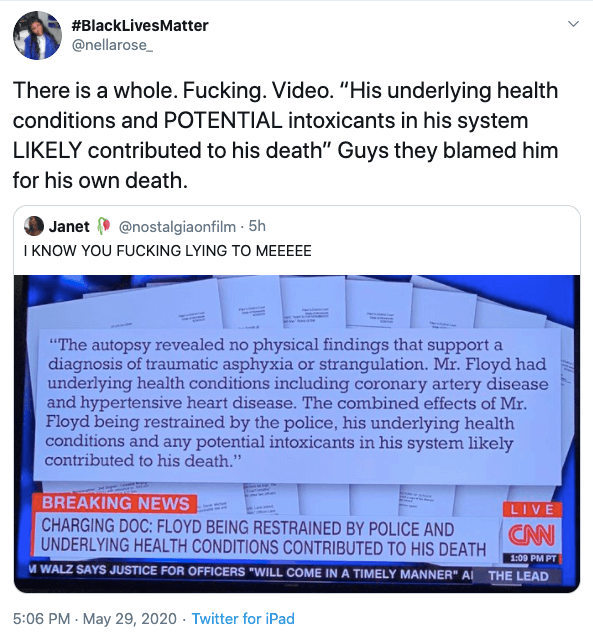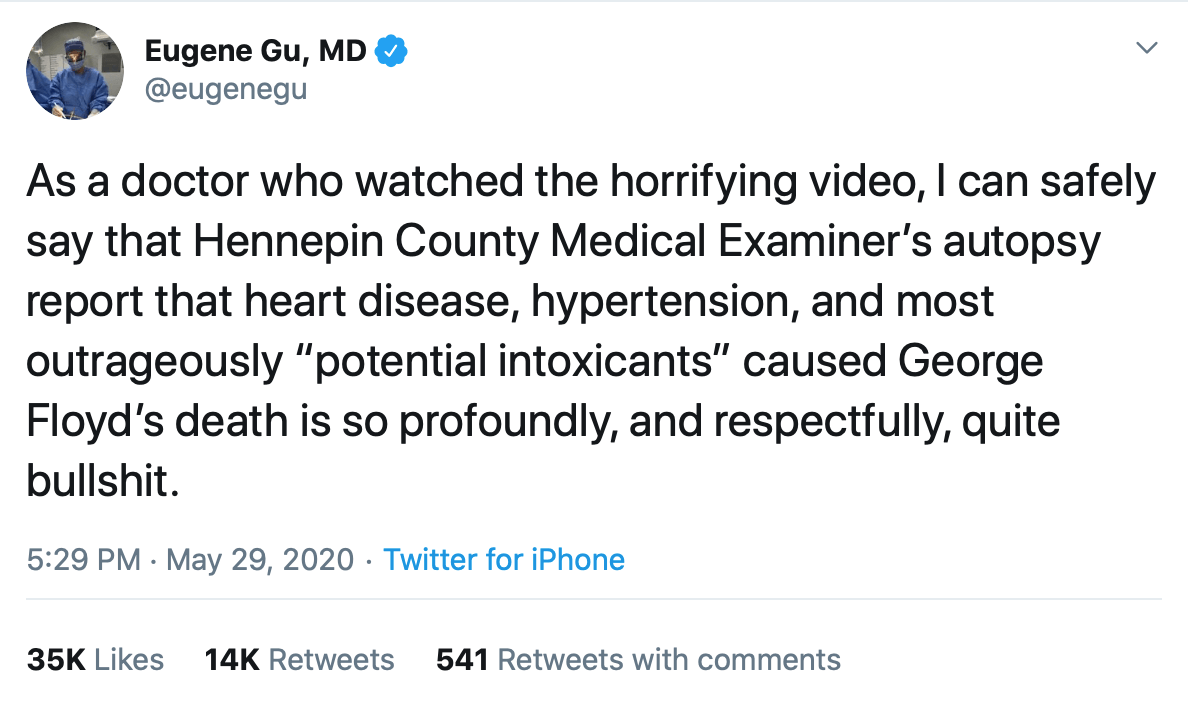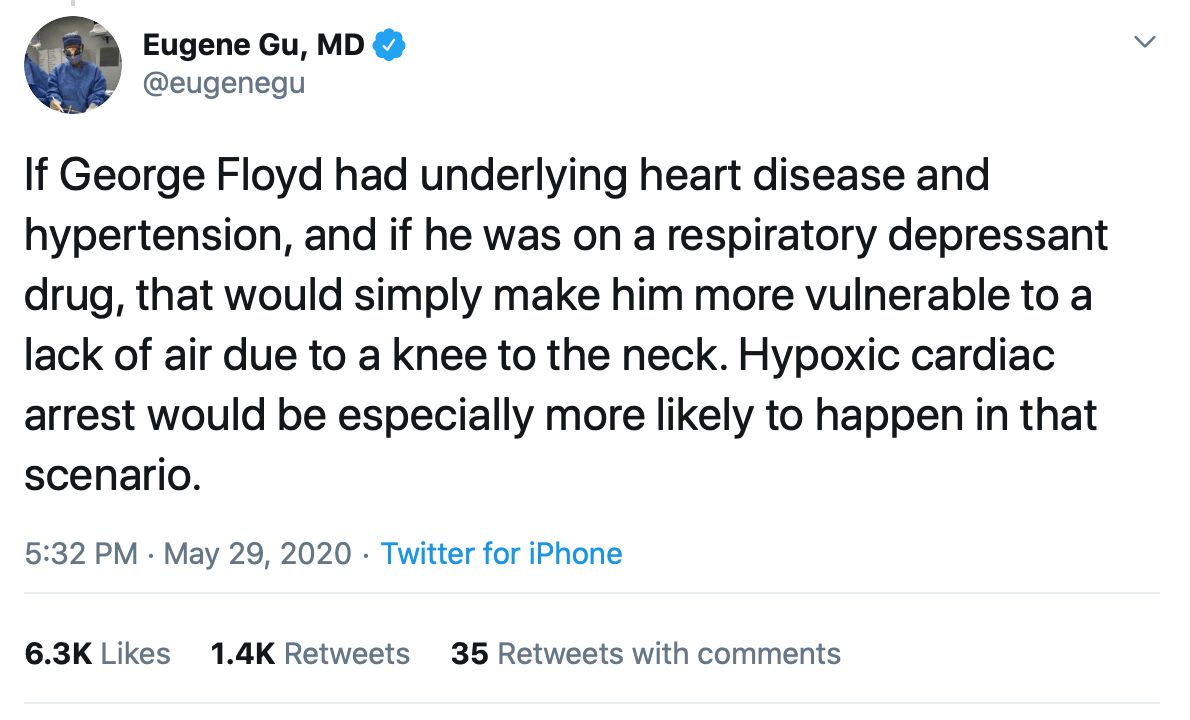Preliminary findings from a Minnesota court filing have attributed George Floyd’s cause of death to underlying heart problems, police restraint, and “potential intoxicants.”
The conclusions of this filing have riled the ire of many online who have been criticizing the eight-and-a-half minute video showing a police officer kneeling on Floyd’s neck. People were enraged about the suggestion that Floyd died as a result of “potential intoxicants,” causing the words to trend on Twitter.
“There is a whole. F*cking. Video. ‘His underlying health conditions and POTENTIAL intoxicants in his system LIKELY contribute to his death,’” Twitter user @nellarose_ wrote. “Guys they blamed him for his own death.”

Eugene Gu, a medical expert who often supplies his observations where questions of medicine are brought up online, called the court filing’s findings “bullsh*t.”
“As a doctor who watched the horrifying video, I can safely say that Hennepin County Medical Examiner’s autopsy report that heart disease, hypertension, and most outrageously ‘potential intoxicants’ caused George Floyd’s death is so profoundly, and respectfully, quite bullsh*t,” Gu wrote from his Twitter account.

Gu wrote that attributing Floyd’s death to underlying heart disease and a possible respiratory depressant are not enough to ignore the video showing Floyd clearly struggling to breathe under Chauvin’s knee.
“Hypoxic cardia arrest would be especially more likely to happen in that scenario,” Gu wrote.

Gu said the video was evidence enough to conclude Floyd’s cause of death.
“You don’t need to have evidence of trauma to the airway to believe that a knee to the neck killed this man,” Gu wrote. “We all literally saw it. And for a medical doctor to ignore the actual most important piece of evidence, the video, to cover up for the police is pure evil. Do no harm.”

According to USA Today, law enforcement experts categorized the restraint technique used by Chauvin as “dangerous” because it can cause suffocation. It has been “widely discredited by law enforcement,” rendering the method all but unused, although it remains an accepted technique in Minneapolis.
John Peters Jr., president of the Institute for the Prevention and Management of In-Custody Deaths, told USA Today that there was no reason for Chauvin’s method of force.
“Regardless of what Mr. Floyd allegedly did or didn’t do, there’s no reason to put a knee on the neck,” Peters told USA Today.
As far as using a knee to restrain someone at the neck, the Department of Justice has advised against this technique for over 25 years. In an informational sheet from the National Law Enforcement Technology Center, a DOJ institution, officers are advised to be careful in restraining those in custody because of a phenomenon called “positional asphyxia.”
Positional asphyxia can result in someone suffocating because they cannot breathe in a certain position. Per the DOJ information sheet, positional asphyxia is known to occur with intoxicants in the system, such as drugs or alcohol.
The medical examiner’s findings make no mention of asphyxia, placing heavier blame on coronary artery disease and hypertensive heart disease.
In a press conference in the White House Rose Garden, President Donald Trump made no mention of Minneapolis or protests happening across the country. Instead, he spoke of relations with China and announced the breaking of ties to the World Health Organization while the country is still in the midst of a pandemic.
READ MORE:


